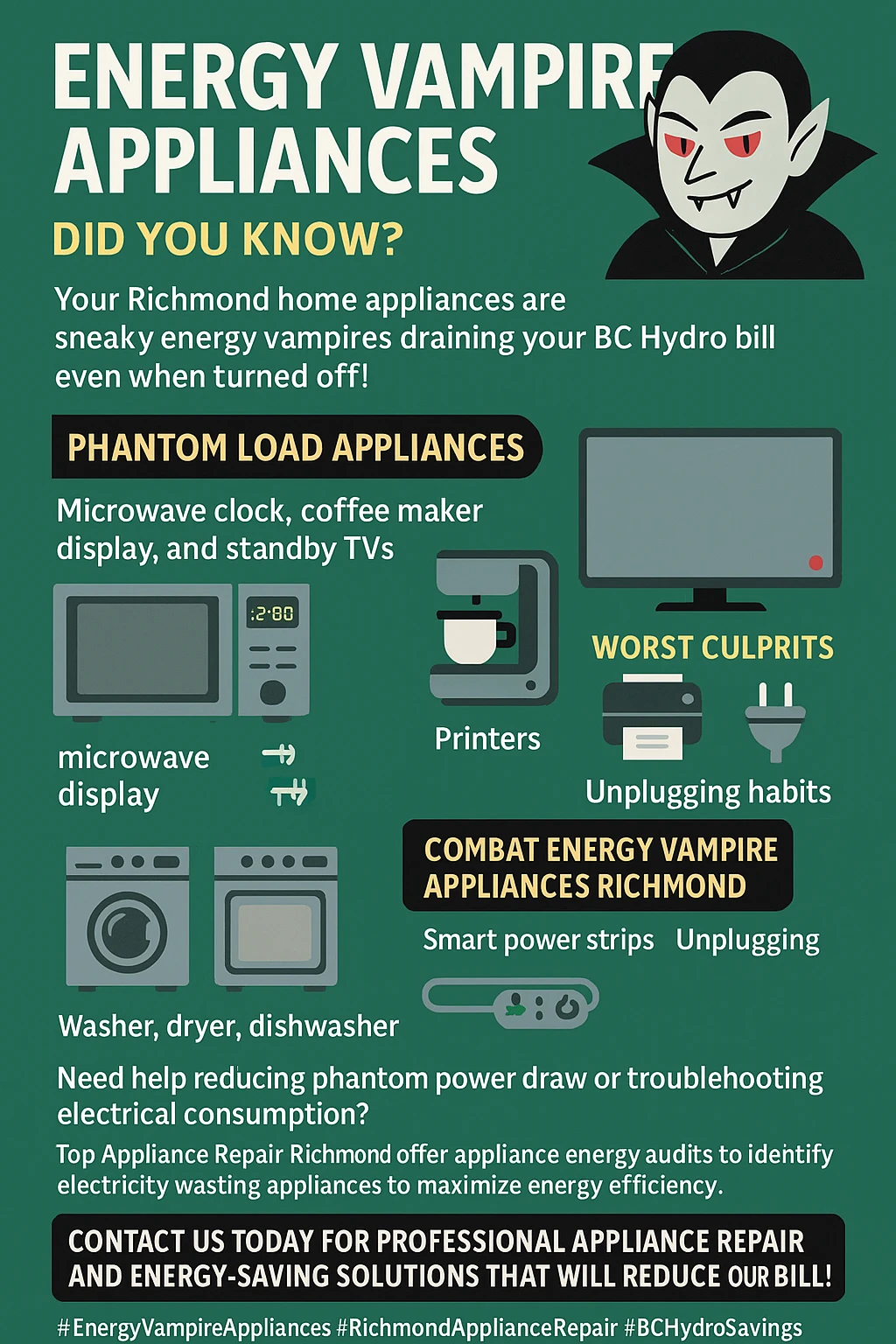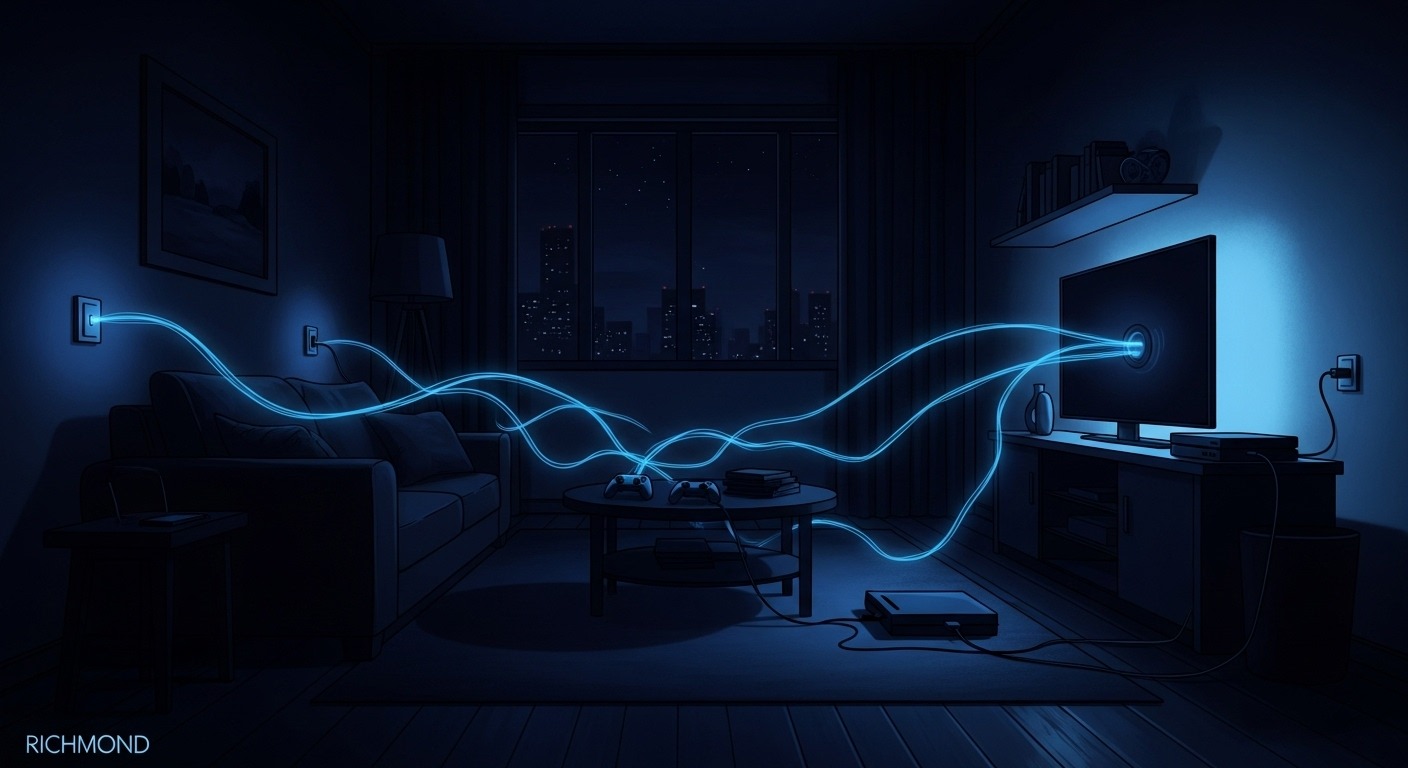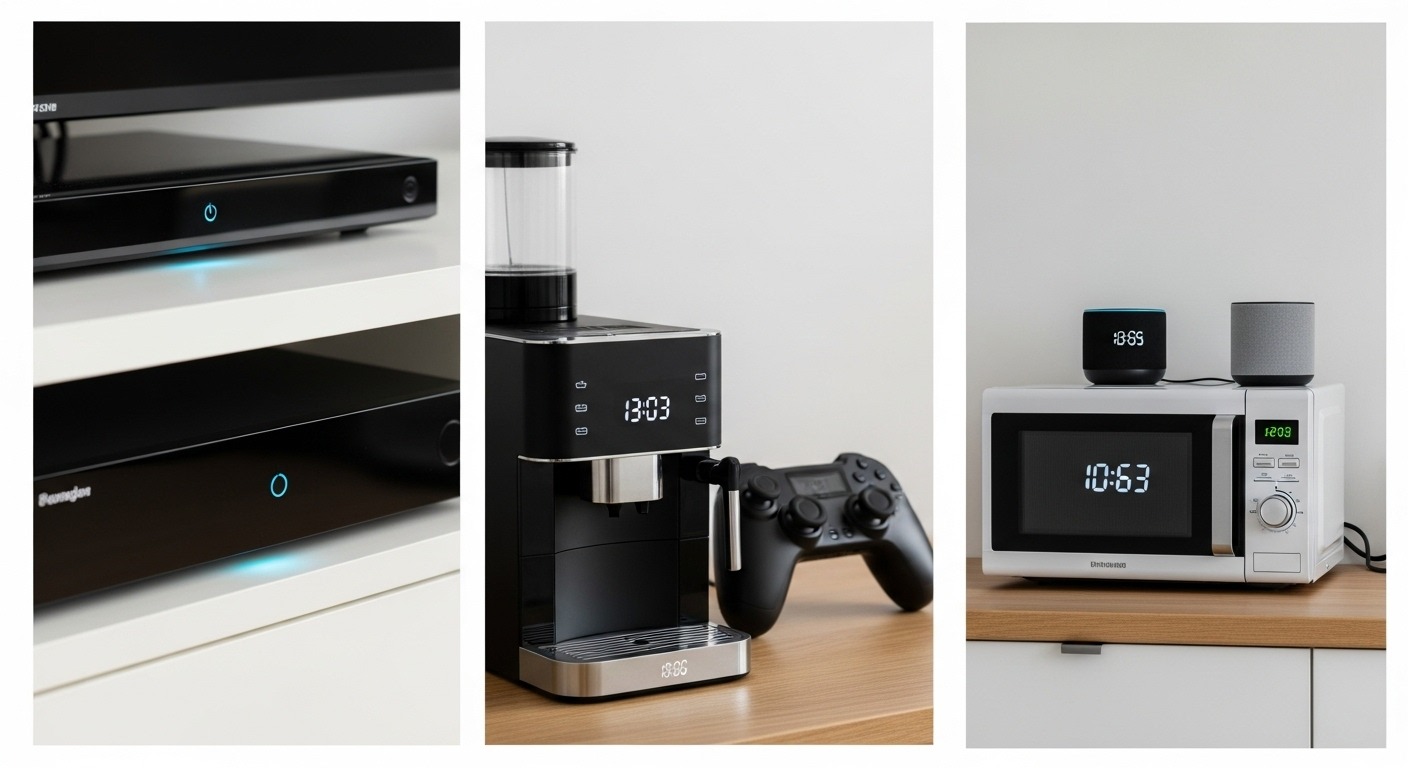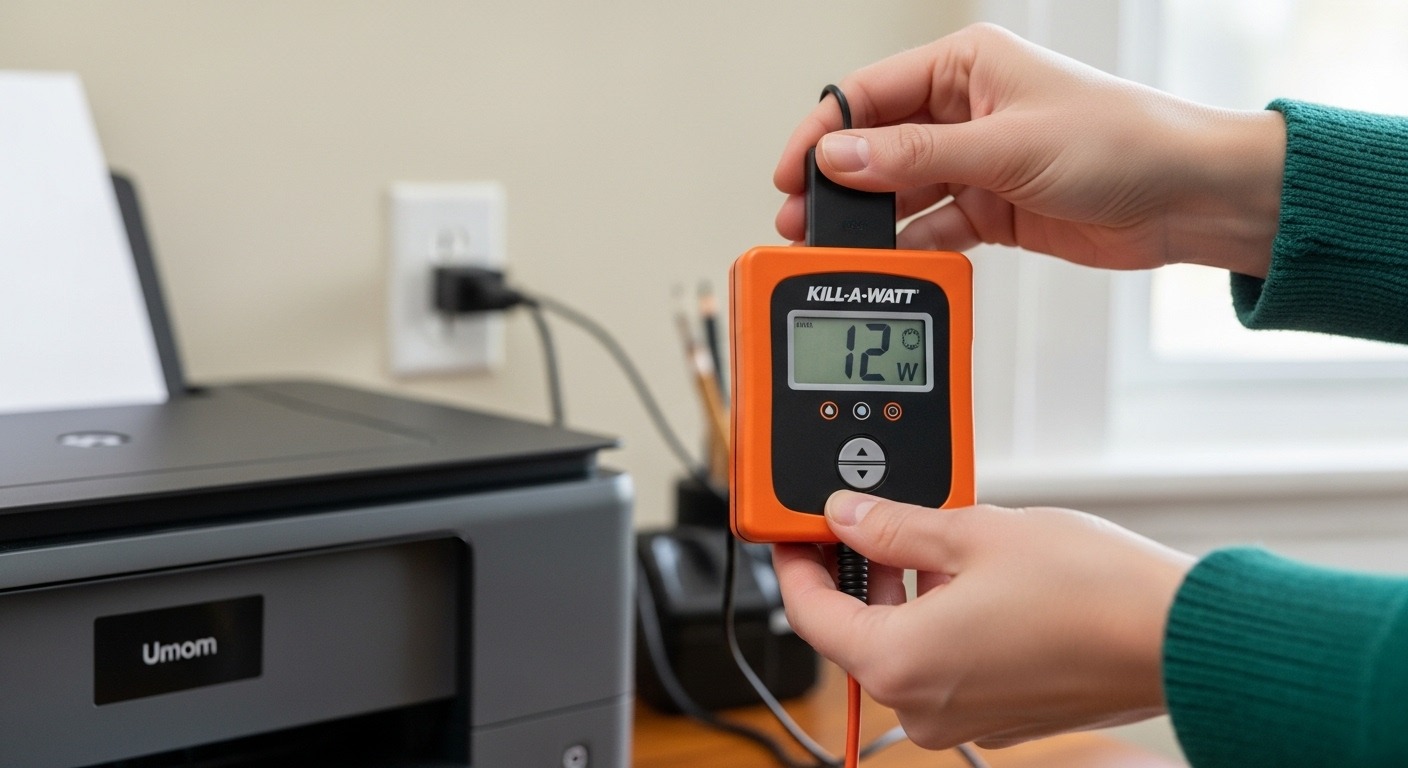Tired of Richmond hydro bills that seem to climb higher each month despite your best energy-saving efforts? You might be dealing with sneaky “energy vampires” – appliances that secretly drain electricity even when they appear to be completely turned off.
Picture this scenario that’s all too familiar for Richmond homeowners: you’ve religiously switched to LED bulbs, programmed your smart thermostat for maximum efficiency, and even invested in ENERGY STAR appliances. Yet when that BC Hydro bill arrives, the numbers still make you cringe. The culprit behind these mysteriously high electricity costs might be hiding in plain sight throughout your home.
From Richmond’s newer condo developments to established family homes in Steveston, countless residents are unknowingly feeding power-hungry devices that continue consuming electricity around the clock. These phantom loads, commonly called “energy vampires,” can account for up to 10 percent of your household’s total energy consumption. That translates to hundreds of dollars annually that you’re essentially throwing away on electricity that provides zero benefit to your daily life.
What makes this particularly frustrating is that many of these energy-draining culprits look completely harmless when they’re supposedly “off.” Your entertainment center appears dormant, your kitchen appliances seem inactive, and your home office equipment looks powered down. However, beneath this peaceful facade, dozens of devices throughout your Richmond home are working overtime in standby mode, silently inflating your hydro costs month after month.
Key Outtakes:
- Phantom load appliances can account for up to 10% of Richmond households’ BC Hydro bills, costing $200-400 annually in wasted electricity
- Entertainment systems including set-top boxes, gaming consoles, and sound systems are among the worst energy vampire offenders, drawing 30-45 watts continuously
- Kitchen appliances with digital displays and timers contribute significantly to standby power consumption throughout Richmond homes
- Smart power strips and strategic unplugging schedules can eliminate phantom power from multiple devices simultaneously
- Professional appliance energy audits help Richmond homeowners prioritize the most cost-effective efficiency improvements

Understanding Phantom Power Consumption in Richmond Homes

Let me share a discovery that completely changed how I think about home energy consumption. During a routine inspection of my Richmond townhouse’s electrical system, I decided to test various appliances with a borrowed power meter from the Richmond Public Library. What I found was absolutely shocking – my entertainment center was consuming nearly 40 watts of electricity around the clock, even though everything appeared to be turned off.
Phantom power, also known as standby power or vampire power, refers to the electricity that appliances and electronic devices consume when they’re plugged into outlets but not actively being used. This isn’t some minor technical quirk that affects only a few devices. It’s a widespread phenomenon that impacts virtually every modern household in Richmond, from waterfront condos in the West Cambie area to family homes throughout Broadmoor.
The reason phantom power consumption has become such a pervasive issue relates to how modern appliances are designed. Many devices need to maintain certain functions even when they appear to be “off” – displaying digital clocks, staying ready to respond to remote control commands, maintaining network connections for smart features, or keeping internal settings in memory. While each individual device might only draw a few watts in standby mode, the cumulative effect across dozens of appliances creates a significant continuous drain on your electrical system.
What makes phantom power particularly costly for Richmond residents is BC Hydro’s tiered pricing structure. Once you exceed the first tier of electricity consumption, every additional kilowatt-hour becomes more expensive. Those phantom loads push many households into higher pricing tiers unnecessarily, amplifying the financial impact of wasted electricity. A device drawing just 10 watts continuously costs approximately $25-30 per year at current BC Hydro rates, and most Richmond homes have multiple devices consuming far more than this modest amount.
Richmond’s Biggest Energy Vampire Appliances

Through extensive testing in various Richmond homes, from Garden City’s newer developments to established neighborhoods like Hamilton, I’ve identified the most notorious energy vampires that are likely costing you money right now. Understanding which appliances consume the most phantom power helps you prioritize your energy-saving efforts where they’ll have the greatest financial impact.
Entertainment systems consistently rank as the worst offenders for phantom power consumption in Richmond homes. Set-top boxes provided by Shaw, Rogers, or Telus can consume between 25-35 watts continuously, even when your television appears to be completely off. These devices maintain constant connections to receive programming information, software updates, and remote control signals. If you have multiple set-top boxes throughout your home – perhaps one in the living room and another in the master bedroom – you could easily be looking at 50-70 watts of continuous consumption just from these two devices alone.
Gaming consoles represent another major source of phantom power drain, particularly newer PlayStation and Xbox models with always-connected features. A gaming console in standard standby mode typically consumes 8-15 watts continuously, but many users unknowingly enable “instant-on” or “quick start” modes that can draw up to 70-80 watts around the clock. These enhanced standby modes are designed to allow near-instantaneous startup times and automatic game downloads, but they come at a substantial energy cost that many Richmond gamers never realize they’re paying.
Kitchen appliances create surprising phantom loads that accumulate throughout your daily routine. Coffee makers with programmable timers, microwaves with digital displays, dishwashers with electronic controls, and even smart refrigerators all maintain continuous power draws to support their various features. While individually these might only consume 2-5 watts each, a typical Richmond kitchen can easily have 6-10 such appliances, creating a cumulative phantom load of 20-40 watts that runs continuously whether you’re home or away.
Home office equipment generates substantial phantom loads that many Richmond remote workers overlook entirely. Desktop computers in sleep mode typically draw 5-15 watts, monitors in standby consume 3-8 watts each, and printers with wireless connectivity can use 10-20 watts continuously to maintain their network connections and respond to print commands. Add in routers, modems, speakers, and charging stations, and your home office could easily be consuming 40-60 watts around the clock even when you’re not working.
One unique consideration for Richmond homeowners relates to climate-controlled spaces and seasonal equipment. Many homes have heated garages with automatic door openers that maintain standby power for remote controls and safety sensors. Additionally, homes with central air conditioning systems often have thermostat systems that continue drawing power to maintain programming and network connectivity even during mild seasons when the HVAC system isn’t actively heating or cooling.
Measuring Your Home’s Hidden Energy Consumption

The most effective way to understand your home’s specific phantom power consumption is through direct measurement using plug-in electricity monitoring devices. Many Richmond residents are surprised to discover just how much standby power their appliances actually consume when tested individually. These measurements provide the concrete data you need to prioritize which devices deserve immediate attention and which ones contribute minimally to your overall energy costs.
Kill-A-Watt meters and similar plug-in monitors are available for borrowing from many Lower Mainland library branches, making it easy and cost-effective to conduct your own appliance energy audit. These devices plug directly into wall outlets, allowing you to plug your appliance into the meter and get real-time readings of power consumption in various states – completely off, standby mode, and active use. The data these meters provide often reveals significant differences between what homeowners expect their appliances to consume and what they actually measure.
When conducting your own phantom power audit, test each device in multiple operational states to get a complete picture of its energy consumption patterns. For example, many Richmond homeowners assume their printer uses no power when not actively printing, but most wireless-enabled printers maintain 8-15 watts of standby consumption to keep their control panels active and respond to network print commands. Similarly, sound systems that appear completely dormant often consume 10-25 watts continuously to power remote control sensors and maintain amplifier circuits in ready mode.
Smart home monitoring systems offer a more comprehensive approach for tracking phantom power consumption across your entire electrical system. These systems install at your electrical panel and provide detailed breakdowns of energy usage by individual circuits or even specific devices. While more expensive than simple plug-in meters, whole-home monitoring systems can identify patterns and phantom loads that might be difficult to track manually, especially for hardwired appliances and built-in systems that can’t be easily tested with portable meters.
Seasonal variations in phantom power consumption present another important
